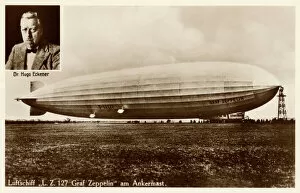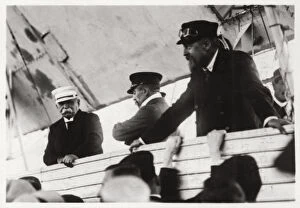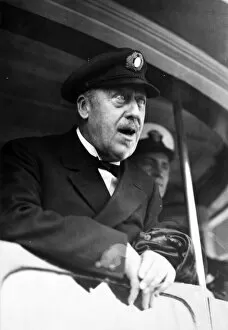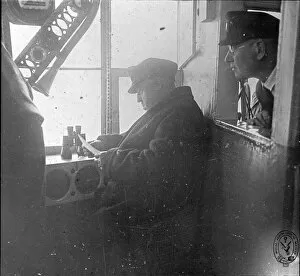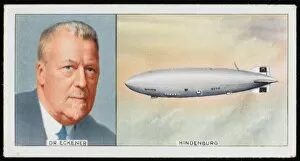Eckener Collection
Dr. Hugo Eckener: A Pioneer in Aviation Dr
For sale as Licensed Images
Choose your image, Select your licence and Download the media
Dr. Hugo Eckener: A Pioneer in Aviation Dr. Hugo Eckener, the renowned German aeronaut and manager of Luftschiffbau Zeppelin from 1917 to 1933, played a significant role in shaping the history of aviation. Known for his expertise and leadership, he was instrumental in the development and success of iconic airships like Graf Zeppelin LZ 127. In this captivating photograph, Graf Zeppelin can be seen majestically anchored, showcasing its grandeur against the backdrop of an azure sky. This marvel of engineering revolutionized long-distance travel through its ability to traverse vast distances with ease and comfort. Eckener's passion for aviation began early on when he witnessed Count Zeppelin's pioneering efforts firsthand. Together they embarked on daring adventures aboard zeppelins like Schwaben, capturing imaginations worldwide with their audacious journeys through the skies. However, not all endeavors were without challenges. The crash of Zeppelin LZ 8 Deutschland II in Dusseldorf serves as a stark reminder of the risks involved in pushing boundaries. Yet even amidst setbacks, Eckener remained undeterred; his unwavering determination propelled him forward. With his visionary mindset and technical prowess, Dr. Hugo Eckener steered Luftschiffbau Zeppelin towards unprecedented heights during his tenure as manager. His leadership ensured that these magnificent airships became symbols of innovation and progress. Captured here is Dr. Eckener himself – a man whose name would forever be synonymous with zeppelins – standing proudly beside one such creation's control cabin aboard Graf Zeppelin LZ, and is within this very space that dreams took flight; where countless lives were touched by the wonderment of traversing oceans suspended above Earth's surface. Hugo Eckener's contributions to aviation extended far beyond Germany’s borders; he left an indelible mark on global aerospace history throughout his illustrious career spanning decades until his passing in 1954.

